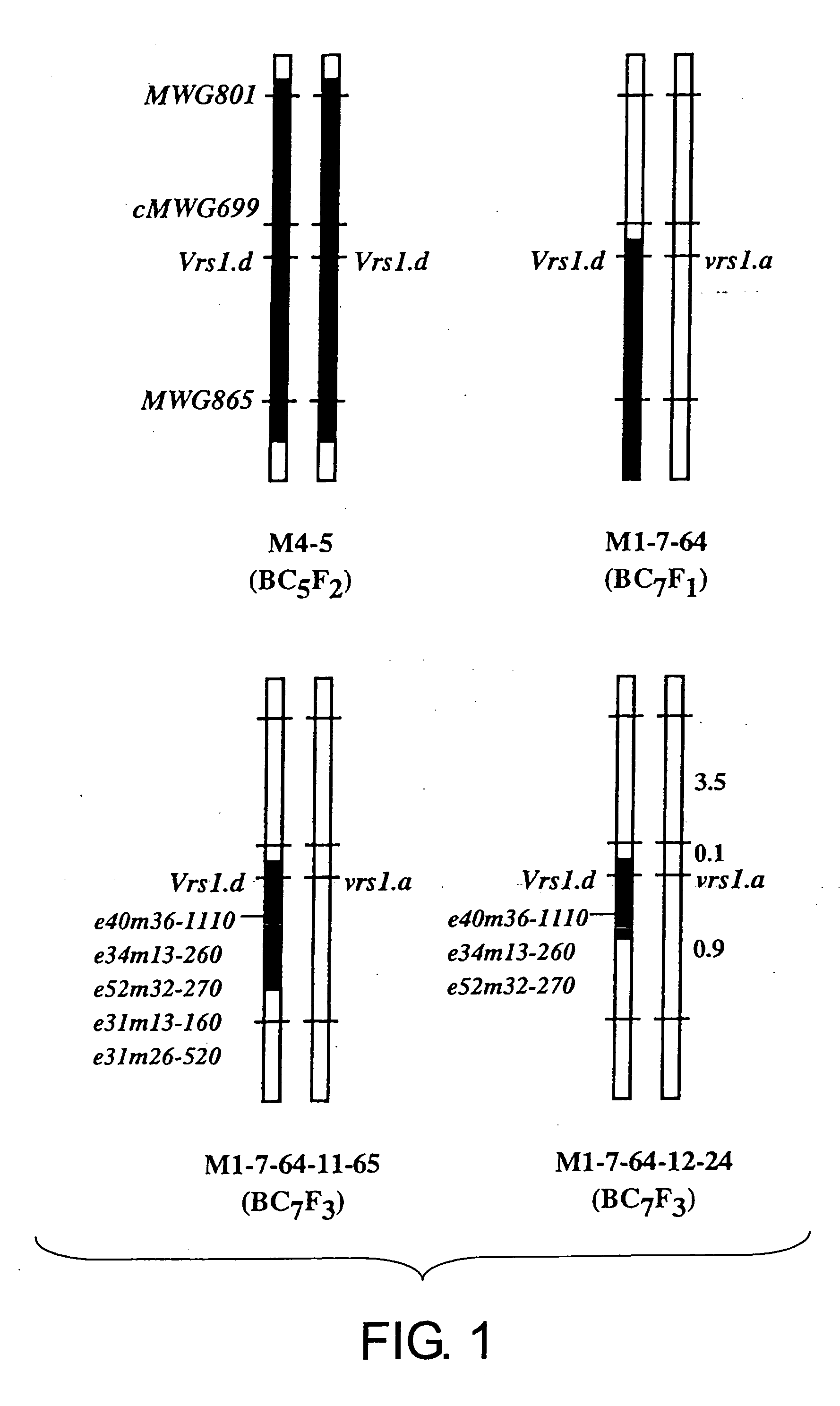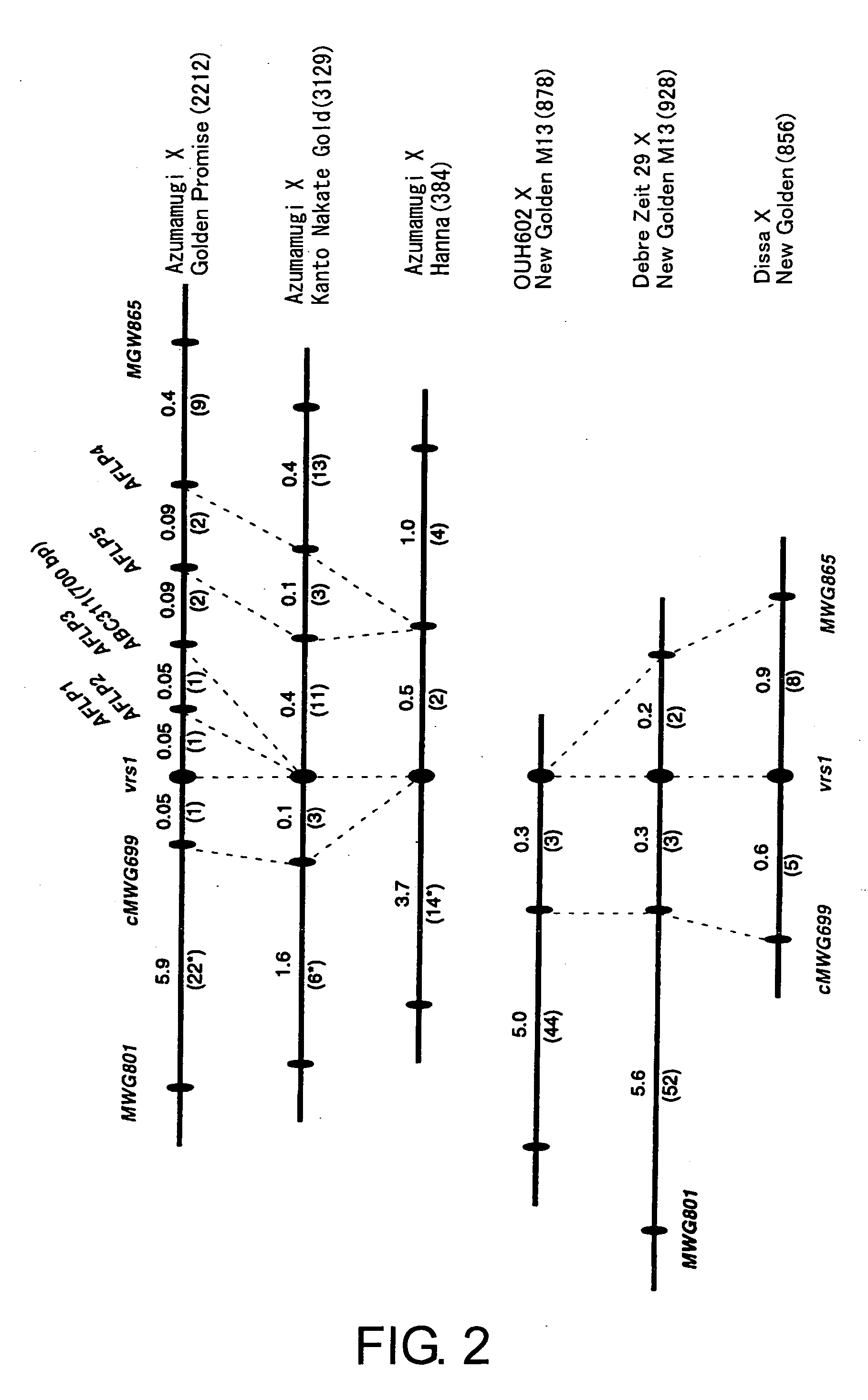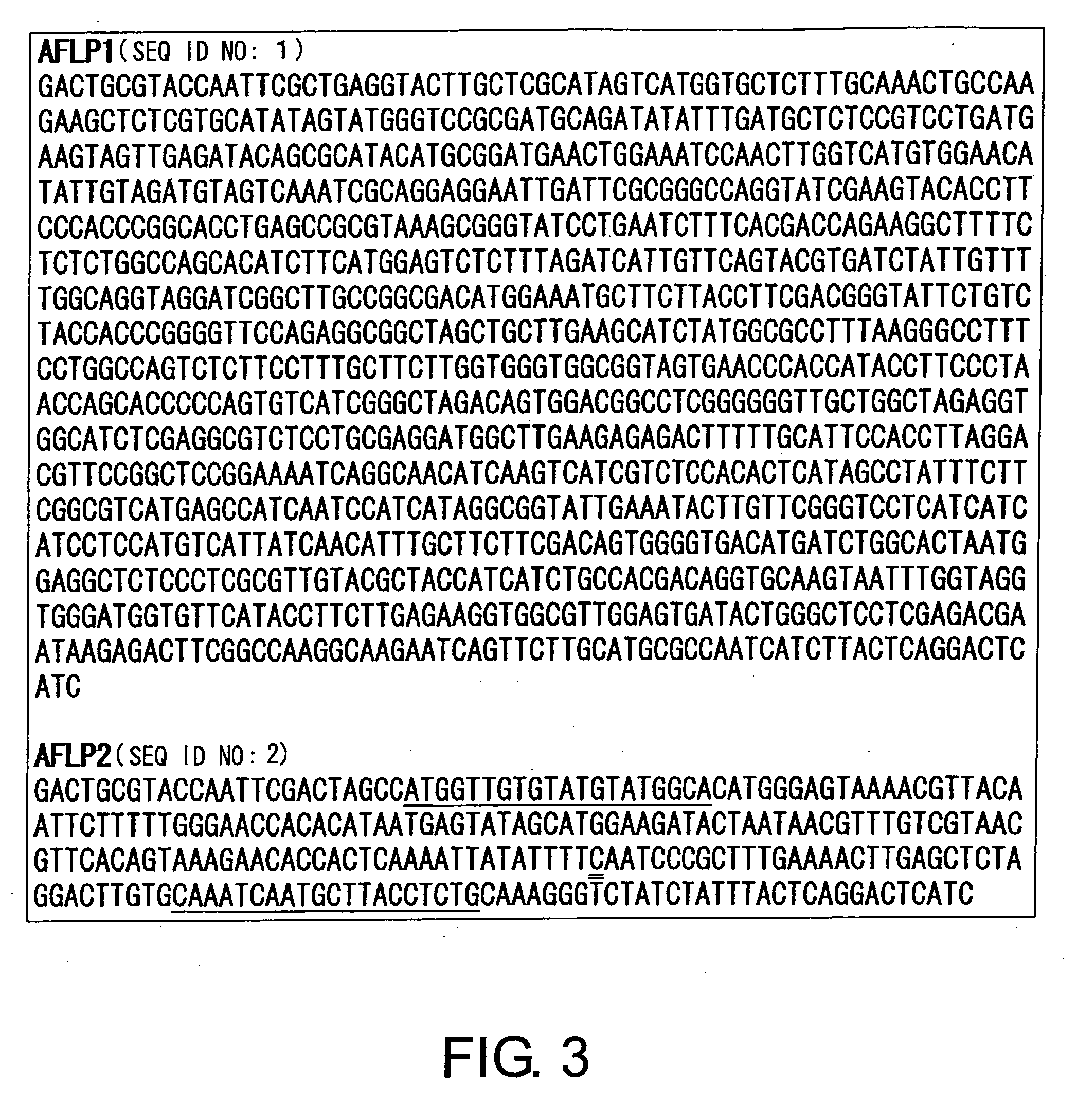Methods of distinguishing ear shape and resistance against gibberella zeae and method of improving barley plant using the same
a technology of gibberella zeae and ear shape, which is applied in the direction of microbiological testing/measurement, fermentation, biochemistry apparatus and processes, etc., can solve the problems of reducing the commercial value of these grains, death in some cases, and difficult detoxification, so as to achieve efficient identification and efficient identification
- Summary
- Abstract
- Description
- Claims
- Application Information
AI Technical Summary
Benefits of technology
Problems solved by technology
Method used
Image
Examples
example 1
[0108] Construction of row type linkage maps and acquisition of molecular markers using BC6F2 and BC7F1 populations of a cross Azumamugi / Kanto Nakate Gold, and F2 populations of Azumamugi / Golden Promise and Azumamugi / Hanna (populations are described in Table 1).
TABLE 1Number ofNumber ofPopulationaGenerationsegregating plantschromosomesAzumamugi × Golden PromiseF2192 and 9142212 Azumamugi × Kanto Nakate Goldb1751 3129 M4-5 × AZ(BC6F2)(192 and 908)(2200) M1-2, M1-7 and M2-1(BC6F2)(278)(556)AZ × M1-7, AZ × M2-1(BC7F1)(373)(373)Azumamugi × HannaF2192384OUH602 × New Golden M13F2439878Debre Zeit 29 × New Golden M13F2464928Dissa × New GoldenF2428856
aAzumamugi, Dissa, and New Golden M13 are six-rowed, and the other cultivars are two-rowed.
bPopulations were mapped using plants of near-isogenic lines for convenience in identifying row type genotype. M4-5, M1-2, M1-7, and M2-1 are plants (individuals) of near-isogenic lines generated by crossbreeding Azumamugi and Kanto Nakate Gold, involvi...
PUM
| Property | Measurement | Unit |
|---|---|---|
| resistance | aaaaa | aaaaa |
| FHB) resistance | aaaaa | aaaaa |
| FHB resistance | aaaaa | aaaaa |
Abstract
Description
Claims
Application Information
 Login to View More
Login to View More - R&D
- Intellectual Property
- Life Sciences
- Materials
- Tech Scout
- Unparalleled Data Quality
- Higher Quality Content
- 60% Fewer Hallucinations
Browse by: Latest US Patents, China's latest patents, Technical Efficacy Thesaurus, Application Domain, Technology Topic, Popular Technical Reports.
© 2025 PatSnap. All rights reserved.Legal|Privacy policy|Modern Slavery Act Transparency Statement|Sitemap|About US| Contact US: help@patsnap.com



